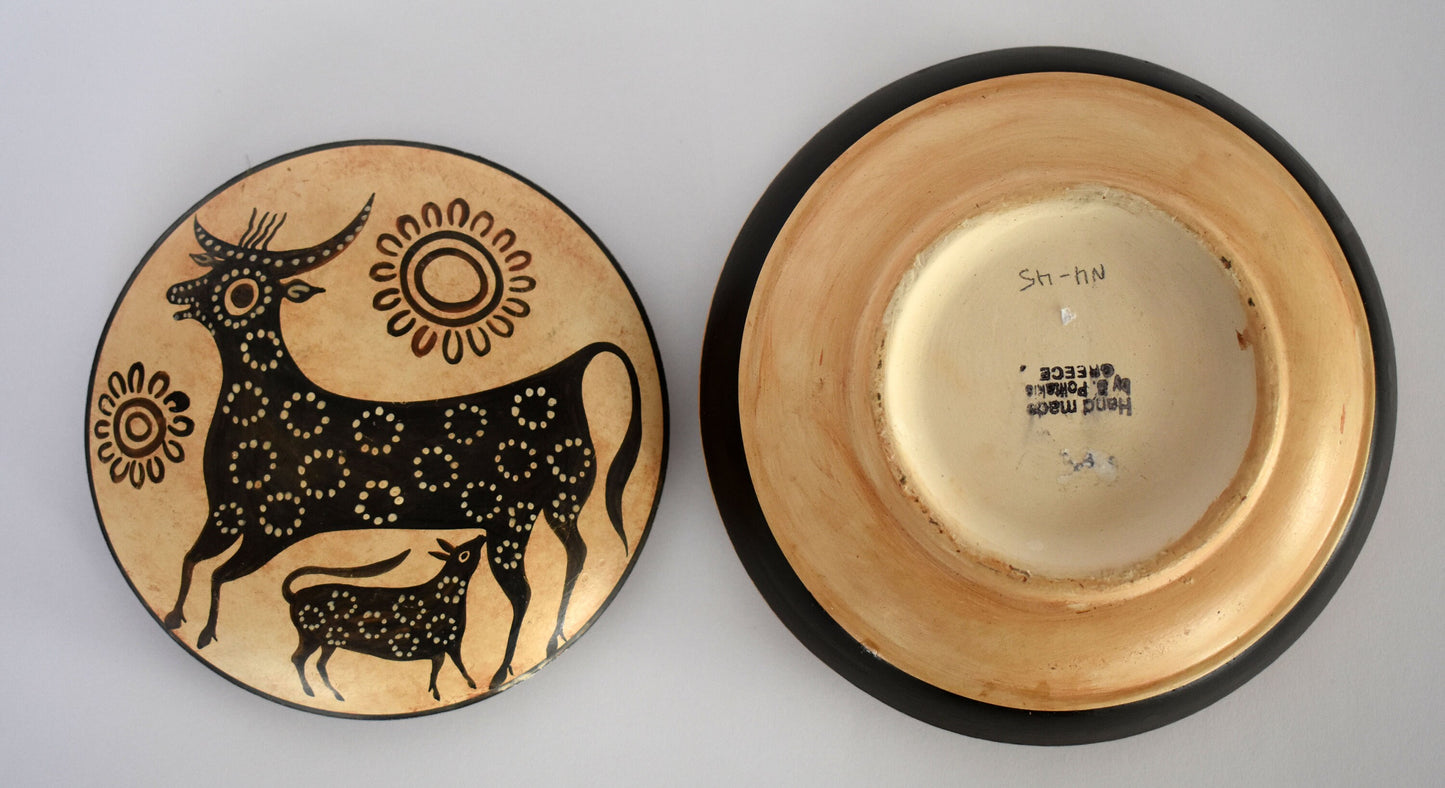Gallery Demeter
Pyxis - Bull Motif - Minoan - 1800 BC - Knossos Palace - Crete - Small - Ceramic Item
Pyxis - Bull Motif - Minoan - 1800 BC - Knossos Palace - Crete - Small - Ceramic Item
Regular price
€49,90 EUR
Regular price
Sale price
€49,90 EUR
Unit price
per
Tax included.
Shipping calculated at checkout.
Couldn't load pickup availability
Item Specifics
Condition: New, Handmade in Greece.
Material: Clay
Height: 6 cm - 2,4 inches
Width: 13,5 cm - 5,3 inches
Length: 13,5 cm - 5,3 inches
Weight: 550 g
Minoan pottery has been used as a tool for dating the mute Minoan civilization. Its restless sequence of quirky maturing artistic styles reveals something of Minoan patrons' pleasure in novelty while they assist archaeologists in assigning relative dates to the strata of their sites. Pots that contained oils and ointments, exported from 18th century BC Crete, have been found at sites through the Aegean islands and mainland Greece, on Cyprus, along coastal Syria and in Egypt, showing the wide trading contacts of the Minoans.
The pottery consists of vessels of various shapes, which as with other types of Ancient Greek pottery may be collectively referred to as "vases", and also "terracottas", small ceramic figurines, models of buildings and some other types. Some pieces, especially the cups of rhyton shape, overlap the two categories, being both vessels for liquids but essentially sculptural objects. Several pottery shapes, especially the rhyton cup, were also produced in soft stones such as steatite, but there was almost no overlap with metal vessels. Pottery sarcophagus chests were also made for cremated ashes, as in an example now in Hanover.
The finest achievements came in the Late Minoan period, with the palace pottery called Kamares ware, and the Late Minoan all-over patterned "Marine Style" and "Floral Style". These were widely exported around the Aegean civilizations and sometimes beyond, and are the high points of the Minoan pottery tradition.
The best and most comprehensive collection is in the Heraklion Archaeological Museum (AMH) on Crete (where most pieces illustrated are held).









